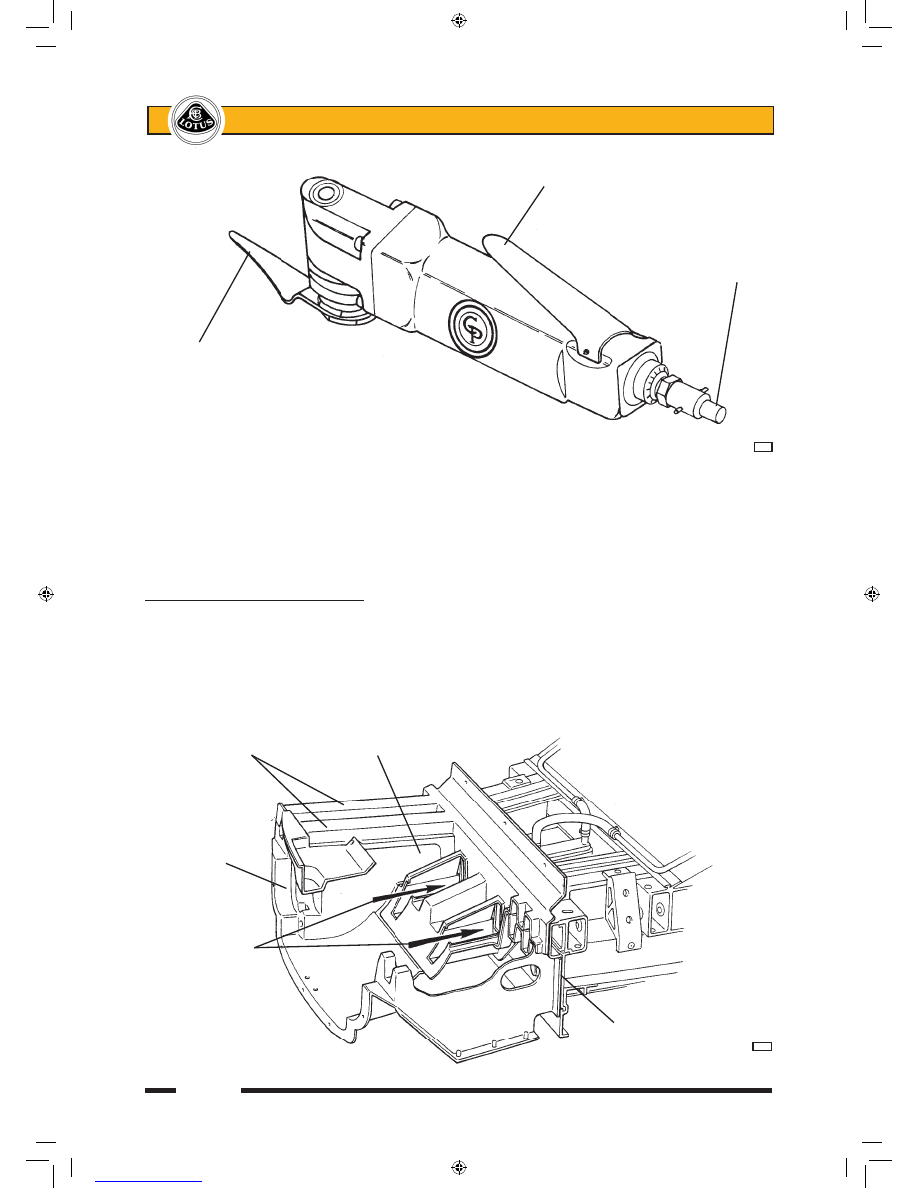Lotus Elise / Lotus Exige. Instruction - part 9

Page 10
Lotus Service Notes
Section BQ
It is not generally practical to remove a bonded panel intact, for later refitment. Consequently, when
necessary, the panel can be cut away for better access to the bonded joint. It is not necessary to remove all
traces of sealant from the joint faces on the remaining panels or chassis, but any remaining sealant must be
securely bonded and no thicker than 1 mm or the fit and joint gaps will be upset. It is essential always to follow
the cleaning/priming/bonding operations meticulously if sufficiently strong and durable bonds are to be obtained.
Always use the specified materials.
BQ.7 - FRONT CRASH STRUCTURE
The front crash structure consists of an upper and lower moulding bonded together and supplied only
as an assembly. It is bonded to the front face of the chassis, and is braced by an alloy undershield screwed
to the bottom front edge of the chassis, and to each lower side of the crash structure. The unit also acts as a
ducting for the engine cooling radiator and a.c. condenser (if fitted) which are mounted horizontally on its top
surface in a bolted-on composite radiator housing. Longitudinal tubes formed in the construction are designed
to produce a particular crush characteristic in order to control the rate of deceleration of the vehicle occupants
in a frontal collision.
Operating handle
Compressed air inlet
Vibrating cutting blade
bj46
Crush tubes
Radiator aperture
Crash structure
Airflow to
climate chamber
via cut outs
in tubes
Chassis front face
p84a
sn_bq_cyclone.indd 10
03/03/2006 10:53:41